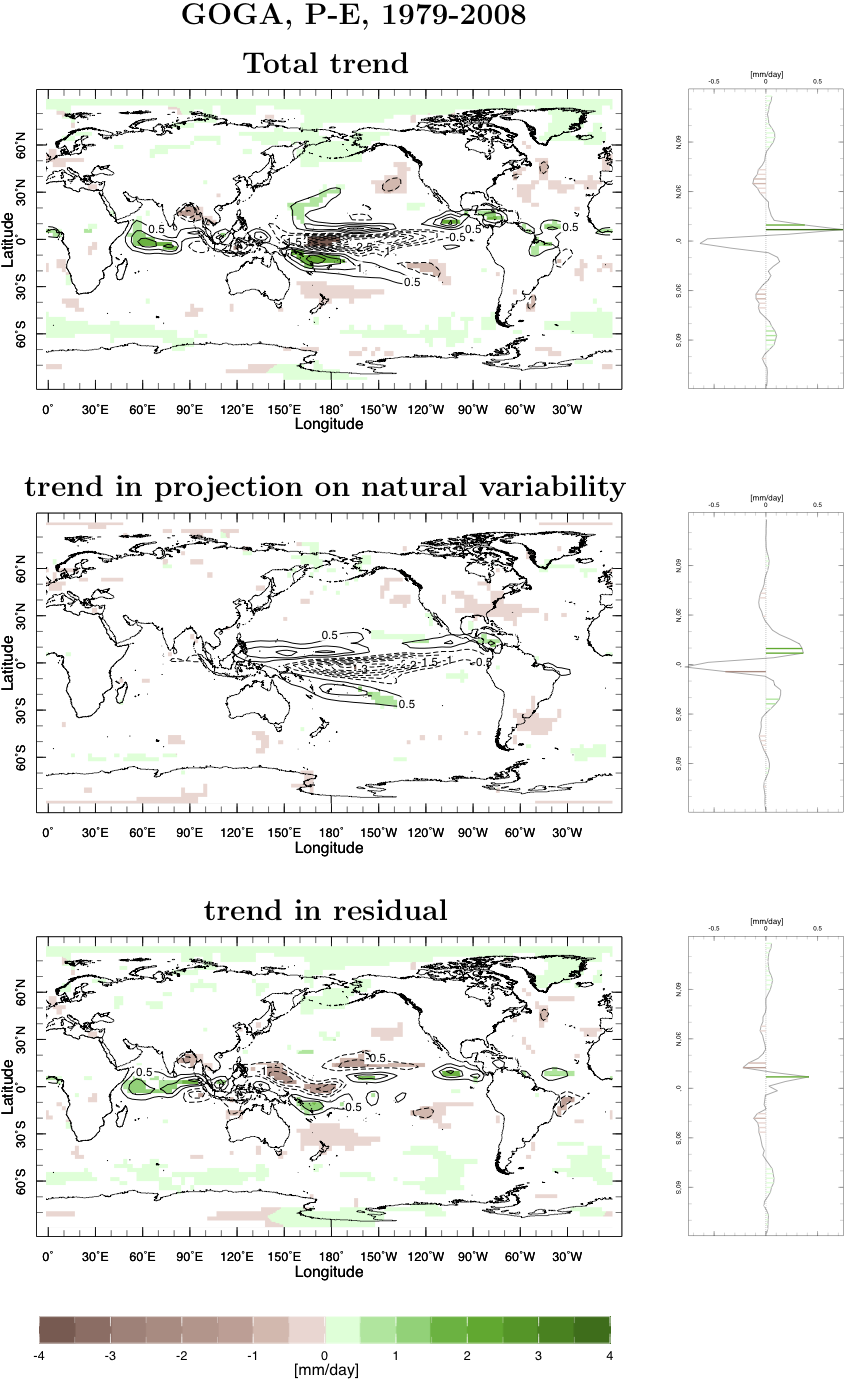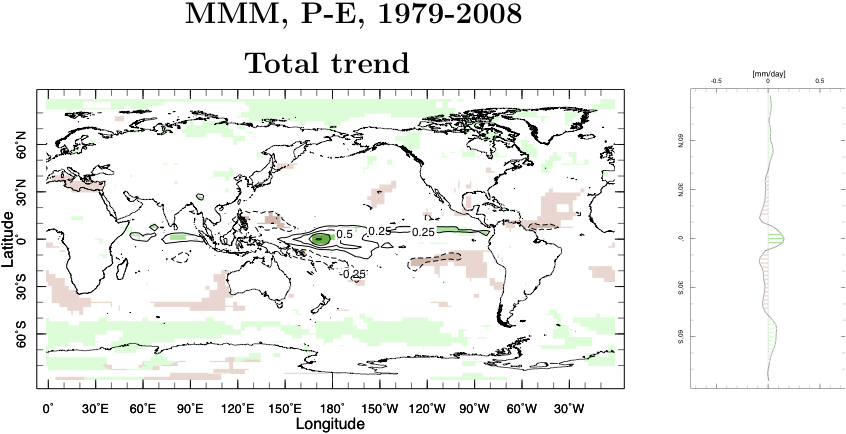|
Developing an Early Warning System for Anthropogenic Hydroclimate Change As we have described elsewhere (and) Southwest North America is projected by models to transition to a more arid climate as the century unfolds. This is part of a general subtropical drying and expansion - the Mediterranean region will be hit even harder - that arises from changes in water vapor transports and atmospheric circulation caused by rising greenhouse gases and global warming. The models predict that this transition to a more arid climate should already be underway. But is it? Can we place any faith in these model projections? In a recent study we attempt to answer this question. The methodology utilizes the fact that the dynamical and thermodynamical mechanisms that causes natural variability of hydroclimate and radiatively-forced change in hydroclimate are different (see http://www.ldeo.columbia.edu/res/div/ocp/drought/mechanisms.shtml) for an examination of this. We then apply this distinction to the history of the atmospheric moisture budget over recent decades (as estimated in the sea level pressure-assimilating Twentieth Century Reanalysis of Gil Compo). We first identify the natural variability of the moisture budget which is dominated by ENSO and remove this component from the total moisture budget and examine the residual.
It is claimed that the trend in the residual moisture budget over recent decades - the part that cannot be easily explained as due to natural variability - has a character and causes consistent with climate model projections of anthropogenic hydroclimate change to date. This includes moistening at the equator and drying in the subtropics. The atmospheric circulation is also divided up into the part tied to natural moisture budget variability and the residual part that contains any anthropogenic-forced change. The observed trends in the residual circulation - including weakening of the tropical overturning circulation and a poleward shift of the meridional overturning cells, are also consistent with what climate models suggest should have happened to data as a consequence of rising greenhouse gases. To date the anthropogenic-forced change in the moisture budget is small compared to trends that arise from purely natural climate variability. However, this work increases confidence that model projections of subtropical drying and expansion (and equatorial moistening) are correct and that, hence, the planet is indeed faced with further amplification of these changes in coming decades. The presentation of this work at the November GloDecH meeting is here. The paper submitted to Journal of Climate is here. REFERENCES
|

